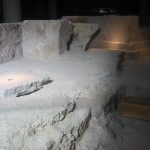Llíria will participate as a UNESCO Creative City in the 3rd Meeting of Spanish Creative Cities, which Bilbao is hosting on this occasion as part of the prestigious Bilbao Bizkaia Design Week. During this forum, Spanish municipalities with the UNESCO seal in recognition of different artistic fields will participate in forums and carry out common initiatives with the axis of culture as the driving force for urban development.
Llíria has already participated in the 2nd meeting, held in Burgos in February 2020. Now the city will travel to Bilbao with a delegation led by the Councillor for Tourism and Artistic Education, Paco García, who, together with the municipal technician for Tourism and the focal point of Llíria City of Music, Vicent Sesé, will take part in several forums and workshops with the aim of stimulating urban development through culture and creativity, fostering interaction between the different artistic disciplines.
The delegation of Llíria City of Music has also the participation of local music. In this case, it is about Fina Martínez Cano, flute professor, conservatory professor and member of the Local Council of Music, who will participate in a creativity workshop together with other artists from the rest of Spanish creative cities.
The councillor Paco García wished to highlight that, “in this time, since Llíria became part of the UNESCO Network in 2019, we have consolidated our presence in it as a very active city, which has promoted different initiatives that have been recognized; besides, meetings like this help us to exchange experiences and promote new cooperation projects with the rest of the municipalities”.
Furthermore, he pointed out that “for future editions we also hope to have the other Valencian town that has joined the network, Manises, recently designated Creative City of Crafts and Folk Arts”.
From Thursday 18 to Saturday 20 November, the following will be present: the host city Bilbao, as Creative City of Design since 2014; Granada, of Literature; Seville and Llíria, of Music; Terrassa and Valladolid, of Cinema; and Denia, which together with Burgos is the Creative City of Gastronomy.
The UNESCO Creative Cities Network was created in 2004 to promote cooperation between cities that identify creativity as a strategic factor for sustainable urban development. The 295 cities from 90 countries that currently make up the Network work together towards a common goal: to place creativity and cultural industries at the centre of their local development plan and to actively cooperate at the international level in the matter.









